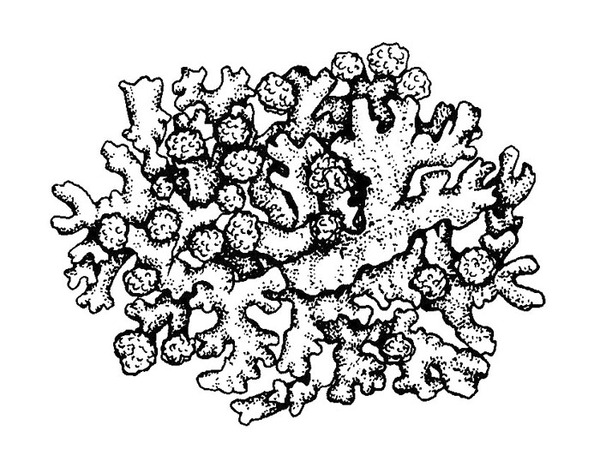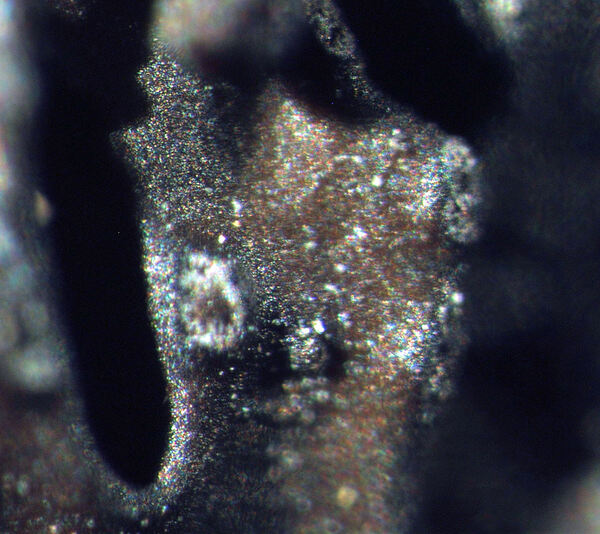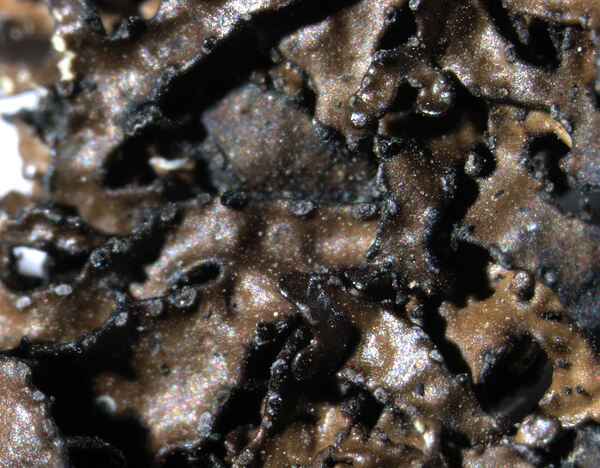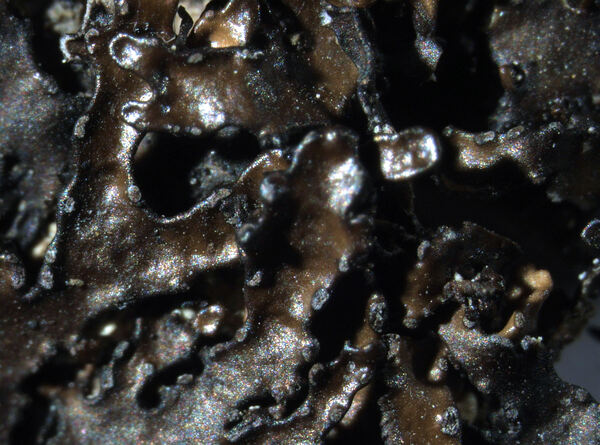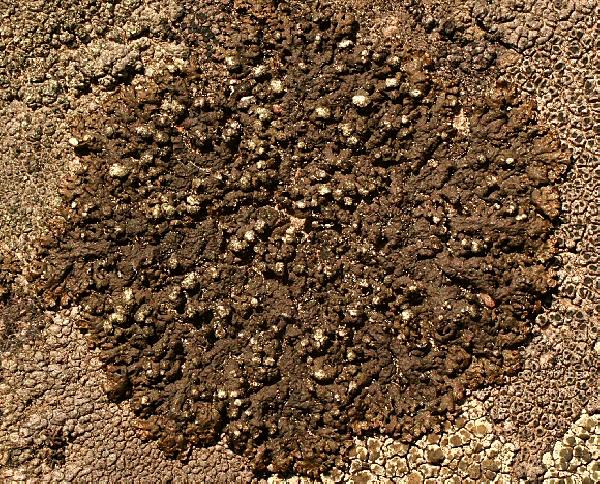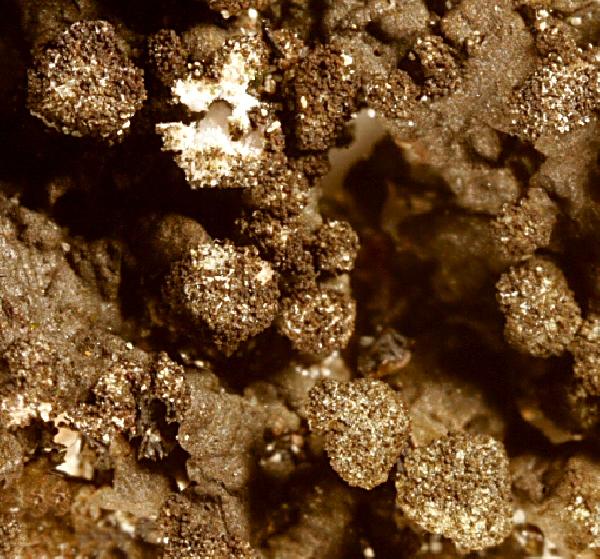Montanelia sorediata (Ach.) Divakar, A. Crespo, Wedin & Essl.
Am. J. Bot., 99: 2023, 2012. Basionym: Parmelia stygia var. sorediata Ach. - Lichenogr. Univ.: 471, 1810.
Synonyms: Imbricaria sorediata (Ach.) Arnold; Imbricaria sprengelii (Flörke) Körb.; Melanelia sorediata (Ach.) Goward & Ahti; Melanelia sorediosa (Almb.) Essl.; Parmelia sorediata (Ach.) Th. Fr.; Parmelia sorediifera R. Sant.; Parmelia sorediosa Almb.; Parmelia sprengelii Flörke
Distribution: N - Ven, TAA (Nascimbene & al. 2022), Piem (Morisi 2005), Emil (Jatta 1909-1911, Fariselli & al. 2020), Lig. C - Tosc (Jatta 1909-1911), Sar (Nöske 2000, Nöske & al. 2000). S - Camp (Jatta 1909-1911), Pugl (Jatta 1909-1911).
Description: Thallus foliose, heteromerous, dorsiventral, closely adnate, up to 6 cm in diam., sorediate. Lobes separate, linear, 0.5-1.5 mm wide, flat, the terminal parts not markedly expanded. Upper surface dark olive-brown to blackish, paler olive-brown in shade-forms, dull, smooth to reticulate near the periphery, without pseudocyphellae, with discrete, capitate soralia at the tips of lateral lobes, the soredia whitish. Lower surface dark brown to black, with scattered, dark, simple rhizines. Upper cortex paraplectenchymatous, with a non-pored epicortex, the cell walls containing isolichenan; medulla white; lower cortex paraplectenchymatous. Apothecia rare, up to 2.5 mm across, lecanorine, sessile or short-stipitate, with a concave to flat disc and a usually sorediate thalline margin. Epithecium brown; hymenium and hypothecium colourless. Asci 8-spored, clavate, Lecanora-type. Ascospores 1-celled, hyaline, ellipsoid, 9-11 x 4.5-6 µm. Photobiont chlorococcoid. Spot tests: upper cortex K-, C-, KC-, P-, N-; medulla K-, C-, KC- or rarely KC+ very faint pink, P-, UV+ white. Chemistry: medulla with perlatolic and stenosporic acids (both major).Note: on vertical seepage tracks of siliceous rocks, mostly in upland areas. All records from continental Italy (see Nimis 1993: 484) require confirmation.
Growth form: Foliose, broad lobed
Substrata: rocks
Photobiont: green algae other than Trentepohlia
Reproductive strategy: mainly asexual, by soredia, or soredia-like structures (e.g. blastidia)
Commonnes-rarity: (info)
Alpine belt: absent
Subalpine belt: very rare
Oromediterranean belt: extremely rare
Montane belt: very rare
Submediterranean belt: absent
Padanian area: absent
Humid submediterranean belt: absent
Humid mediterranean belt: absent
Dry mediterranean belt: absent
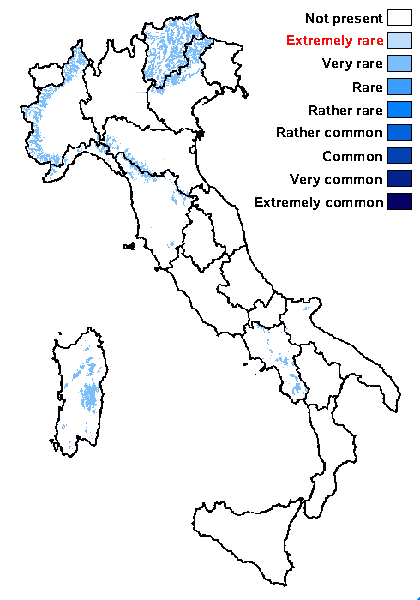
Predictive model
Herbarium samples
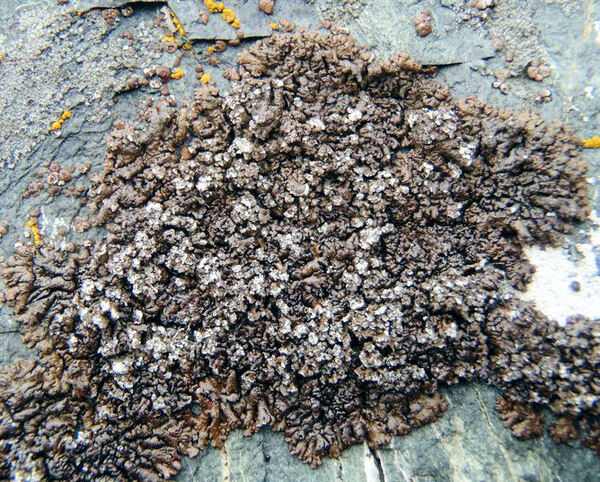

Curtis Randall Björk CC BY-SA 4.0
Northwest Territories, near MacKay Lake Date: 2011-08-08 On rock outcrop in brushy tundra
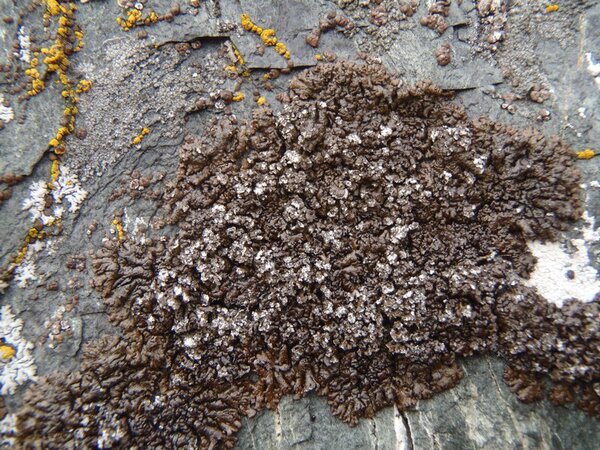

Curtis Randall Björk – CC BY-SA 4.0
Northwest Territories, near MacKay Lake Date: 2011-08-08 On rock outcrop in brushy tundra
Growth form: Foliose, broad lobed
Substrata: rocks
Photobiont: green algae other than Trentepohlia
Reproductive strategy: mainly asexual, by soredia, or soredia-like structures (e.g. blastidia)
Commonnes-rarity: (info)
Alpine belt: absent
Subalpine belt: very rare
Oromediterranean belt: extremely rare
Montane belt: very rare
Submediterranean belt: absent
Padanian area: absent
Humid submediterranean belt: absent
Humid mediterranean belt: absent
Dry mediterranean belt: absent

Predictive model
| Herbarium samples |


Curtis Randall Björk CC BY-SA 4.0
Northwest Territories, near MacKay Lake Date: 2011-08-08 On rock outcrop in brushy tundra


 INDEX FUNGORUM
INDEX FUNGORUM
 GBIF
GBIF
 DOLICHENS
DOLICHENS
